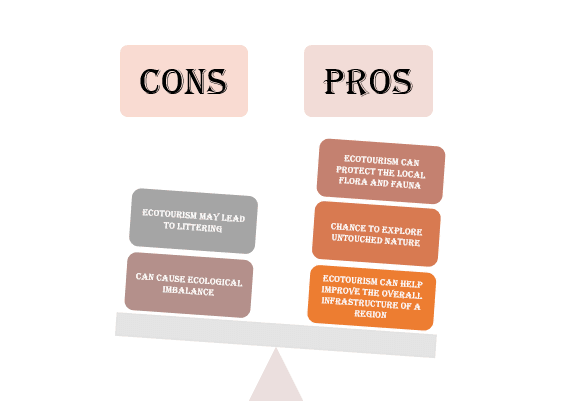Ecotourism: Harmonizing Travel and Conservation for a Sustainable Future
The oldest and most often used term for it is ecotourism, a movement that started to emerge back in the 1980s. Sustainable tourism, green tourism, natural tourism, ethical tourism, mindful travel, conscious travel, pro-poor tourism, and many others are more growing industrial buzzwords.
Whatever you choose to name it, the core ideas behind these ideologies are the same: the travel industry as a whole ought to adopt more ecologically responsible methods, save a destination’s natural and cultural history, and assist local people.
The popularity of responsible travel has recently increased at a far faster rate than that of typical sun and beach tourism

Ecotourism Market Insights
- These types of inquiries are becoming more and more frequent, with some analysts suggesting that ecotourism already accounts for 11.4% of all consumer purchasing. The answers to these concerns will also become more and more important as we observe more detrimental effects of mass tourism on cherished tourist locations around the globe.
- Ecotourism’s market size was estimated at $181.1 billion in 2019 and is projected to grow at a CAGR of 14.3% from 2021 to 2027 to reach $333.8 billion

- The growth of tourism and travel to uncommon locations has demonstrated notable resilience on a worldwide scale
- Popular eco-tourism sites around the world include Iceland, Kenya, Palau, and Nepal.
- At the end of 2018, Nepal had 1,173,072 more visitors than the previous year, a remarkable 24% growth. In a similar vein, Kenya saw a more than 37% rise in visitor arrivals in 2018, surpassing the two million mark.
- Additionally, nations like Costa Rica, the Galapagos Islands, and Panama are now top destinations for ecotourism.
- In contrast to the nation’s historical, ecological, and cultural tourist assets, Ethiopia has thrived admirably in recent years by concentrating on niche markets. Travelers have been drawn to the region because of wildlife tourism, birdwatching, coral reefs, and untouched natural areas like the Amazon woods.
Covid-19 Impact Analysis
- One of the Industries most adversely affected by the pandemic is tourism. The length of the viral outbreak will continue to be an important consideration in determining the pandemic’s overall effects, although after 2023, the world travel and tourist market is anticipated to normalise.
- The COVID-19 pandemic has significantly impacted the ecotourism industry as a result of travel restrictions implemented globally to try to stop the pandemic’s spread.
- After COVID-19, nations all over the world are seeking to strengthen their tourism industries. In order to help the tourism sector, governments are undergoing structural change and giving financial stimulation.
Conclusion
One of the biggest obstacles to the growth of ecotourism is the lack of suitable support infrastructure at ecotourism locations, such as poor air, train, or road access to diverse ecotourism destinations in emerging and underdeveloped countries. Despite these issues, the worldwide ecotourism industry is projected to increase at a 17.5% compound annual growth rate (CAGR) from $157.76 billion in 2021 to $185.43 billion in 2022. At a CAGR of 12.7%, the size of the worldwide ecotourism market is anticipated to reach $299.03 billion in 2026.
Author: Kartik Barrot
